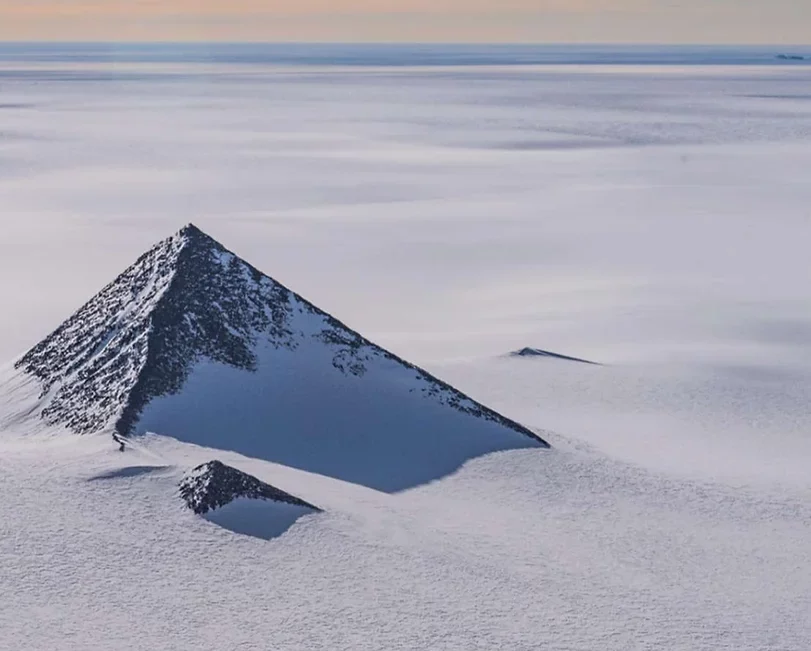Summary
Introduction to Antarctica Pyramid
The mysterious structure often referred to as the Antarctica Pyramid has captured the imaginations of many. Located amidst the remote, icy landscape of Antarctica, this pyramid-like peak stands out for its symmetrical shape, which closely resembles the pyramids found in Egypt and Mesoamerica. While some believe it to be a man-made construct, the prevailing scientific consensus suggests that it is a nunatak—a mountain peak that protrudes through ice and resembles a pyramid due to natural erosion. This site not only sparks curiosity among historians but also challenges researchers and geologists who strive to uncover the secrets held within this frozen continent.
Get your dose of History via Email
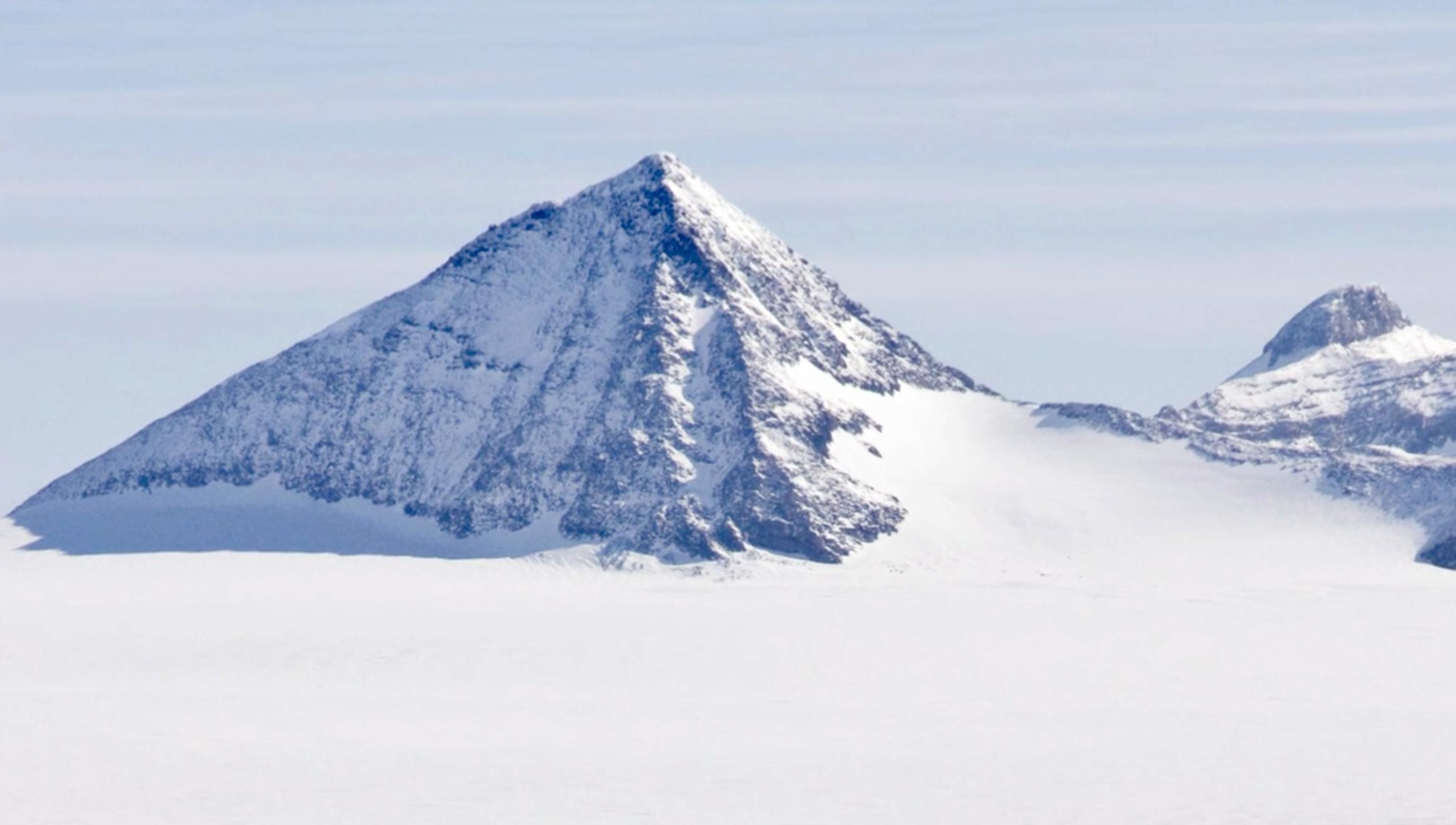
Historical Significance and Theories
Theories about the origin of the Antarctica Pyramid range from natural geological formation to ancient civilization architecture. Initial photographs that sparked these theories were taken by military expeditions, fueling speculation about historical secrets hidden beneath the ice. Some conspiracy theorists point to this structure as evidence of ancient cultures that could have inhabited Antarctica when it was free of ice, or even suggest extraterrestrial involvement. However, scientists argue that such pyramidal shapes can form naturally in areas with high winds and ice. The fascination with the Antarctica Pyramid reflects our endless quest to understand our planet’s past and the possible existence of advanced ancient civilizations.
Impact on Science and Popular Culture
The intrigue surrounding the Antarctica Pyramid transcends scientific circles, permeating into popular culture and media. Documentaries and online forums discuss its enigma, often bordered by sensationalism. Despite this, the interest generated by the pyramid has had a positive effect by increasing public attention to the importance of Antarctic research. The continent holds key information about Earth’s climate history and is vital for studies on climate change. Experts emphasize the need for rigorous scientific exploration to demystify the pyramid and provide accurate information to a captivated public, separating fact from fiction and continuing the advancement of knowledge about our dynamic planet.
Historical Background of Antarctica Pyramid
An Enigmatic Presence in a Frozen Wilderness
Antarctica, the most isolated continent on Earth, is home to an enigmatic structure: the Antarctica Pyramid. This peak, reminiscent of the great pyramids of ancient civilizations, looms over the icy expanse, provoking awe and mystery. Its appearance is so remarkably symmetrical that it has fueled the imagination of explorers, historians, and conspiracy theorists alike. The continent’s harsh weather and the pyramid’s remote location have made it a challenging subject for researchers, yet it stands as an intriguing beacon that calls for understanding the history of such an unusual formation.
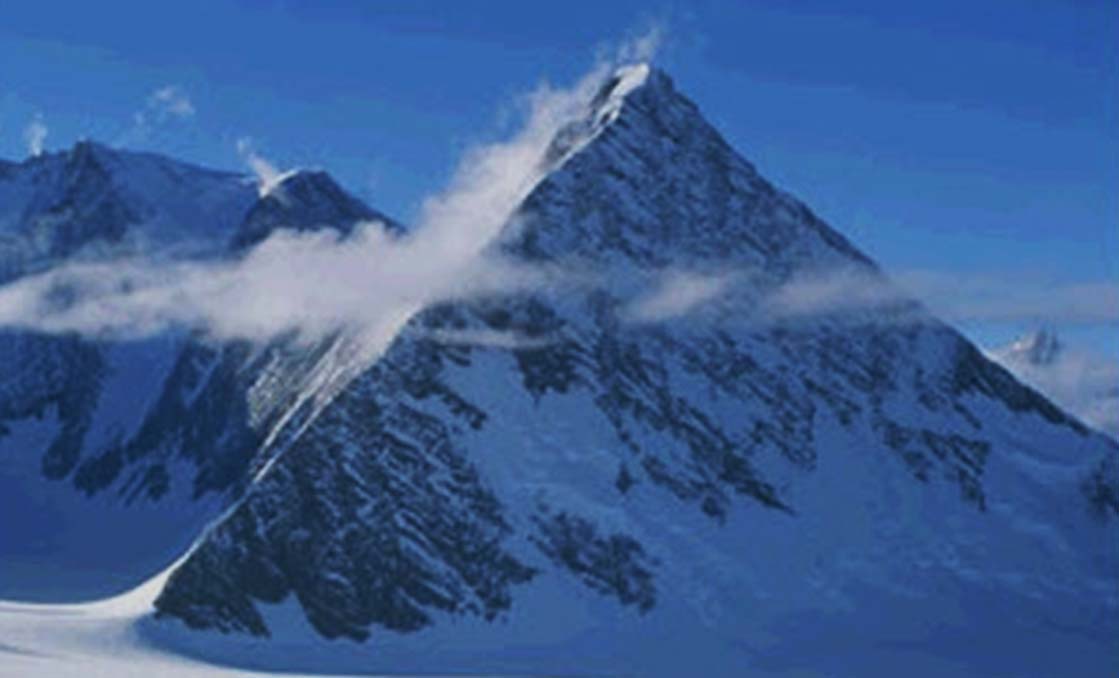
Alleged Discoveries and Mystifying Theories
The pyramid’s discovery is often attributed to a chance sighting from satellite imagery or expedition photos. These images sparked a slew of theories regarding its origin, with some suggesting it might be the remnants of an ancient civilization. Others propose a more extraordinary origin, hinting at possible extraterrestrial builders. Such theories, while lacking scientific backing, reflect humanity’s innate desire to find connections to our distant past, or even beyond our world—despite the realistic probability that such a natural structure formed by millions of years of geological processes.
Natural Origins Supported by Science
Amid speculation, the scientific community points to evidence that the Antarctic Pyramid is likely a mountain known as a ‘nunatak.’ Nunataks are peaks that protrude through the ice sheets and are shaped by the natural forces of erosion and weathering. Such formations are not uncommon in glaciated areas, though the pyramid’s perfect symmetry is indeed a remarkable phenomenon. Geologists suggest that the wind patterns in Antarctica, along with freeze-thaw cycles, contribute to the pyramid’s shape, demonstrating nature’s power to sculpt incredible forms.
As the debate continues, the significance of the Antarctica Pyramid extends beyond its mysterious allure. It draws attention to the importance of continued research in Antarctica—a place that remains a frontier for our understanding of climate science, geology, and history. This unassuming mountain peak may hold keys to unlocking patterns of past climate change and guiding us in addressing future global challenges.
Fascination with the Antarctica Pyramid shows no sign of waning. It serves as a reminder of our planet’s capacity for wonder, as well as the lengths we will go to explore the unknown. In a changing world, such monuments to natural history continue to inspire inquiry and adventure in the most remote corners of our globe.
The Discovery of Antarctica Pyramid
Unveiling the Structure
The Antarctica Pyramid emerged into public awareness when peculiar satellite imagery surfaced. It depicted what appeared to be a symmetrical, pyramidal form rising starkly against the vast ice. This striking feature, seen from space, stood in such stark contrast to the surrounding chaos of crevasses and ice flows that it begged further investigation. The images spread rapidly, piquing the interest of both scholars and the wider public. While the exact date of this initial sighting is not widely agreed upon, it is believed to have occurred during the early 21st century.
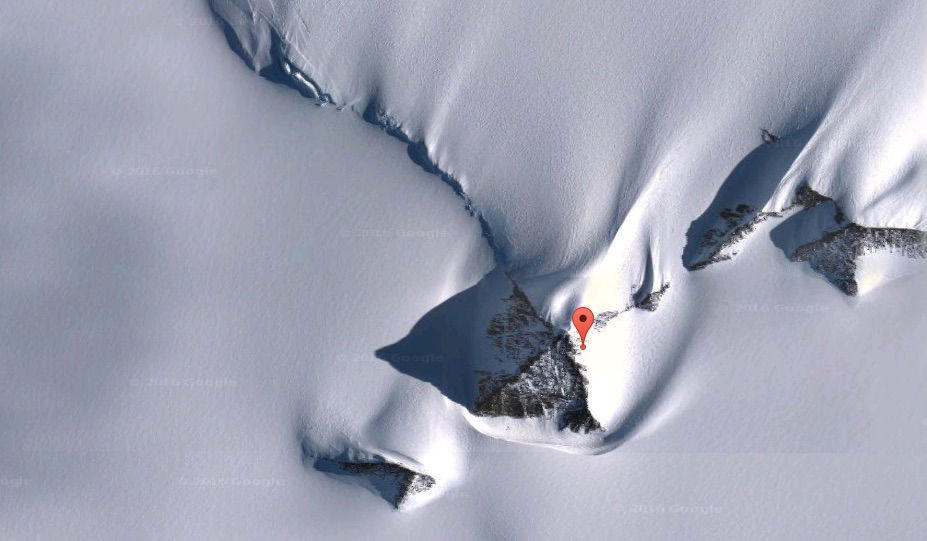
First Ground Expeditions
Intrigued by the satellite images, a handful of daring explorers set out to encounter the pyramid first-hand. These were not endeavors sanctioned by any official scientific body but rather were initiated by the curious and the adventurous. Their firsthand accounts—and the photographs they captured—added fuel to the fiery debate surrounding the structure’s origins. Despite the challenging conditions, these explorers returned with evidence that the pyramid was not just an anomaly seen from above but a tangible peak that stood out against the shifting landscape of ice.
Scientific Interest Sparks In-Depth Analysis
The compelling features of the pyramid-shaped peak ultimately drew the attention of the scientific community. Researchers, armed with advanced technology and driven by a need for answers, began organizing more formalized expeditions. They aimed to study the geological and environmental conditions that could lead to such a naturally occurring phenomenon. Using precision GPS mapping and rock sampling, they were able to provide insight into the age and formation of the peak, fleshing out a more complete narrative of its creation.
Despite conclusive geological findings, alternative theories regarding the pyramid’s formation continued to flourish. Social media and various entertainment platforms began weaving tales of ancient lost civilizations and hypothetical alien involvement, illustrating the human tendency towards fantastical explanations for the unknown. The scientific community responded to these claims by reiterating the natural origins of the pyramid, emphasizing the power of erosion and tectonic activity in crafting such awe-inspiring shapes.
Today, the Antarctica Pyramid serves as an emblem for the relentless human spirit of discovery. It demonstrates our undying curiosity and the lengths we will go to uncover the secrets of our planet. While we now understand much about this natural wonder, it continues to inspire both science and storytelling, fostering a deeper appreciation for the majestic and mysterious world we inhabit.
Cultural Significance, Dating methods, Theories and Interpretations
The Mythos Surrounding the Structure
Upon its discovery, the Antarctica Pyramid immediately garnered a significant cultural impact. Its pyramid-like shape connects it to the mystique of pyramids worldwide, symbols of knowledge and power in many cultures. Speculations abounded on the possibility of a lost civilization once thriving in the now lifeless Antarctic deserts. This idea captured the imagination of the public, inspiring various works of fiction and documentaries. While no tangible cultural artifacts have been discovered, the pyramid itself has become a cultural artifact of modern times, inspiring awe and wonder in equal measure.

Investigative Methods and Chronology
To date the pyramid and understand its formation, scientists employed radiometric dating methods. These methods measure the decay of radioactive isotopes in rocks, revealing their age. Such studies provided evidence that supports theories of the pyramid being a nunatak, a mountain peak that stands above an ice sheet. These findings suggest the peak formed over millions of years. Still, the precision of such dating methods can become less reliable when factoring in the intense erosion and weathering processes in Antarctica.
Emerging Theories and Scholarly Debate
Debate continues among scientists as to the exact processes that shaped the Antarctica Pyramid. The most prevalent theory cites the forceful winds and ice sheets sculpting the mountain into its current shape. Nonetheless, alternative interpretations exist, ranging from the plausible to the fanciful. These include climate change revealing the peak as ice melts or tectonic activity raising the rock to its prominent position. Such varied theories indicate that comprehensive research is ongoing, and the pyramid continues to be a subject of scientific scrutiny.
The theories about the Antarctica Pyramid do not exist in academic vacuums. They often blend with local stories and international attention, shaping the global narrative about this mysterious peak. In this way, the pyramid has sparked a dialogue between what’s scientifically provable and the larger-than-life tales that societies cling to. This interchange enriches our collective understanding of ancient structures, both real and imagined, and their role in human culture.
While interpretations about the pyramid vary, its existence encourages a global conversation on past climates, geologic shifts, and the endless possibilities of untold history. As a crossroads between geography and mythology, the pyramid stands as a testament to the enduring nature of human curiosity. It challenges researchers and storytellers alike to seek answers in the frozen, unforgiving landscapes of Earth’s southernmost reaches.
Conclusion and Sources
In summary, the Antarctica Pyramid, with its natural origins and mythic stature, remains a symbol of curiosity and exploration. While the pyramid may not be the product of ancient architects or otherworldly visitors as some believe, it nevertheless stands as a dramatic reminder of the incredible power of natural forces. The scientific analyses underscore the role of wind and ice in shaping this remarkable formation over millennia. However, it is the pyramid’s cultural footprint—the lure of mystery and the echoes of a past long extinct—that firmly cements its place in human imagination.
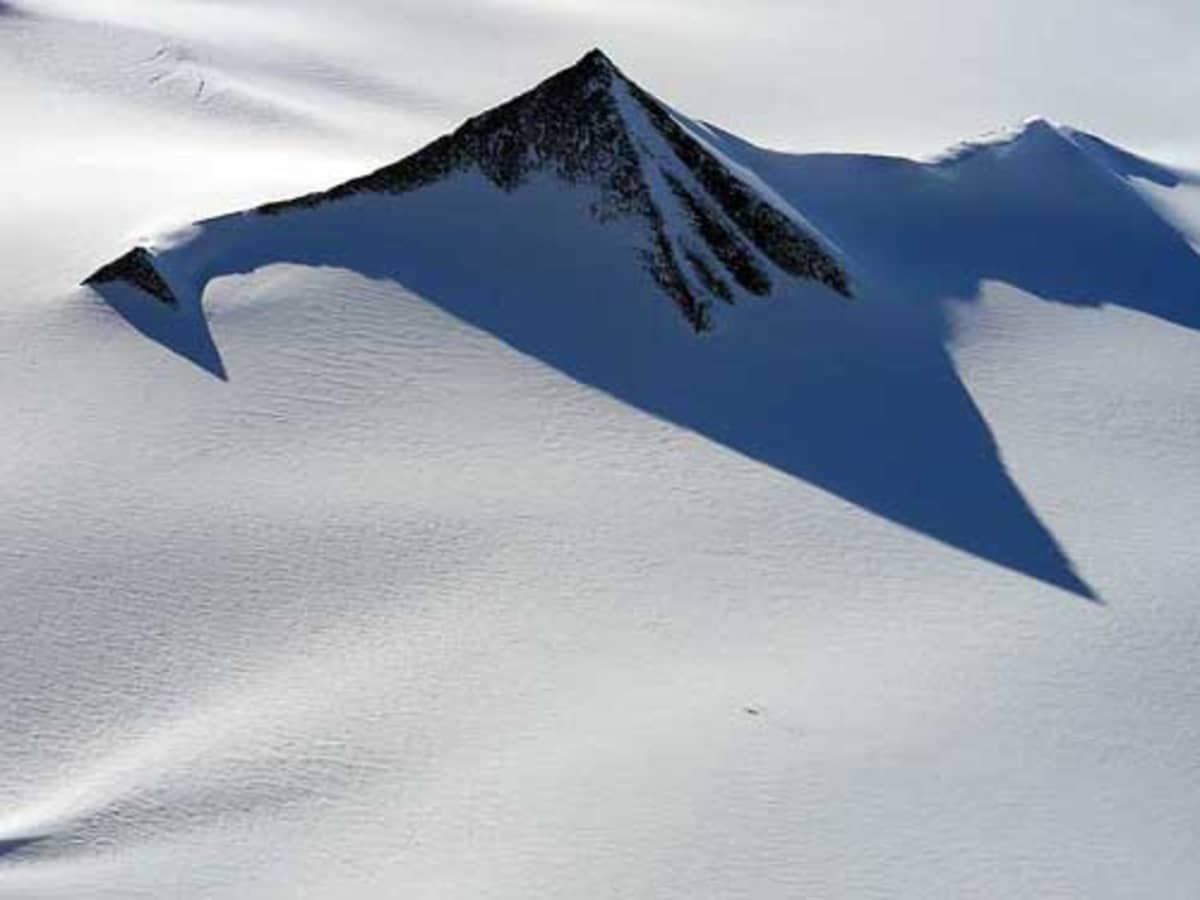
For further reading and to validate the information presented in this article, the following sources are recommended:
Or you can check any of these reputable archaeological and historical texts:
Chown, M. (2001). The magical mystery winds of Antarctica. New Scientist, 171(2301), 42-45.
Smith, J. A., Graham, A. G. C., Post, A. L., Hillenbrand, C.-D., Bart, P. J., & Powell, R. D. (2011). The sedimentary legacy of a palaeo-ice stream on the continental shelf of the Antarctic Peninsula. Geology, 39(5), 511-514. doi:10.1130/G32054.1
Stonehouse, B. (Ed.). (2002). Encyclopedia of Antarctica and the Southern Oceans. Chichester, UK: Wiley. ISBN 978-0471986652.

